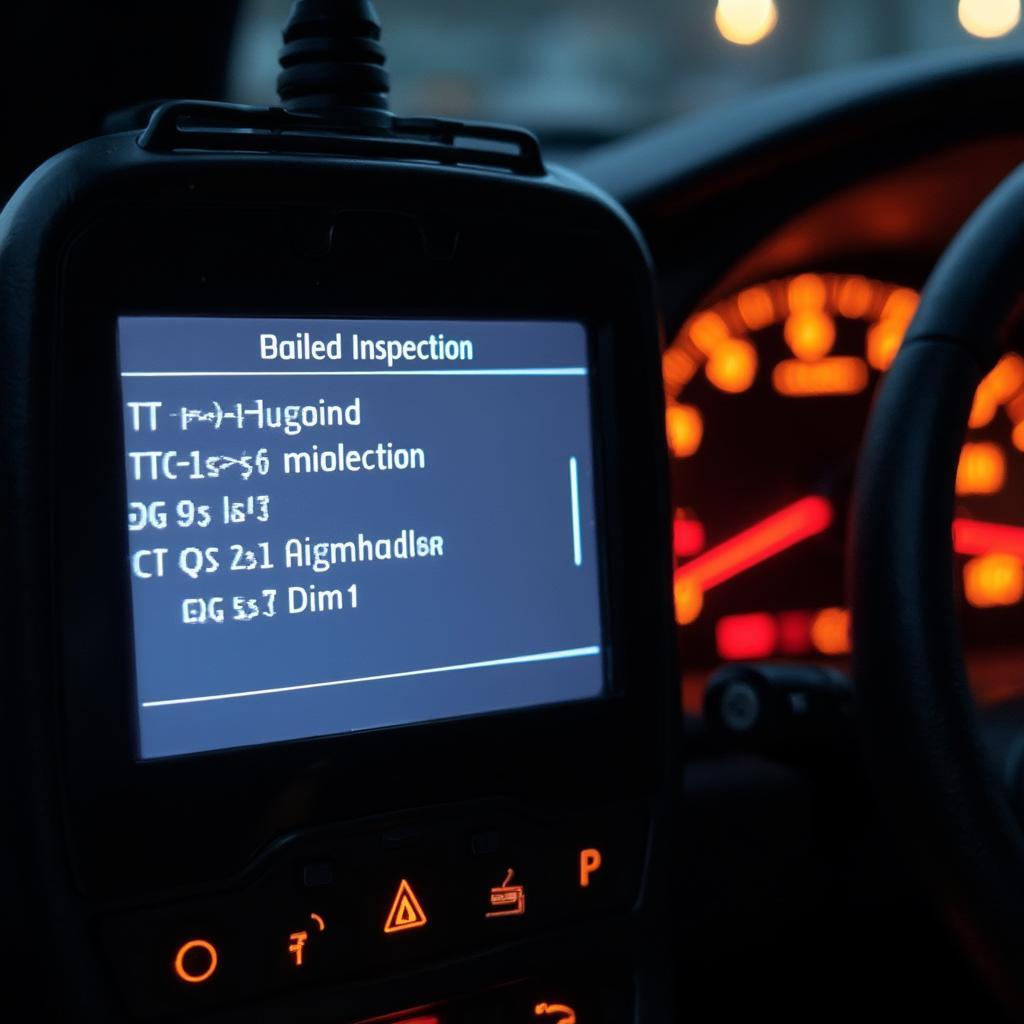Your cart is currently empty!

OBD2 Inspection: A Comprehensive Guide
Obd2 Inspection plays a crucial role in vehicle maintenance and emission control. It’s a standardized process used to diagnose vehicle issues and ensure compliance with environmental regulations. This guide will delve into the intricacies of OBD2 inspection, covering everything from its purpose and procedures to common issues and troubleshooting tips.
Understanding the Importance of OBD2 Inspection
The OBD2 (On-Board Diagnostics II) system is a computerized system built into all vehicles manufactured after 1996 in the United States. It constantly monitors various vehicle systems, including the engine, transmission, and emissions system. When a problem is detected, the OBD2 system stores a diagnostic trouble code (DTC) in its memory. These codes can then be retrieved using an OBD2 scanner during an inspection. This allows technicians to quickly identify the source of the problem and perform necessary repairs. The importance of OBD2 inspection cannot be overstated. It not only helps to maintain vehicle performance but also contributes to a cleaner environment by reducing harmful emissions. It’s a key component in ensuring road safety and environmental protection. Want to know more about OBD2 inspections in specific states? Check out our guide on obd2 inspection ny.
The OBD2 inspection process helps ensure vehicles operate within acceptable emission parameters. By identifying and addressing issues early on, it prevents minor problems from escalating into major repairs, saving vehicle owners time and money.
 OBD2 Inspection Process
OBD2 Inspection Process
How OBD2 Inspection Works
An OBD2 inspection typically involves connecting a scan tool to the vehicle’s diagnostic port, usually located under the dashboard. The scanner retrieves stored DTCs and other relevant data, such as freeze frame data and readiness monitors. Technicians use this information to determine the nature and severity of the problem. The number of monitors required for passing an inspection can vary by state. For example, you can learn more about the requirements in Texas at texas obd2 inspection how many monitors.
What Does the OBD2 Scanner Check?
The scanner checks for various parameters including emissions-related components, such as the catalytic converter, oxygen sensors, and evaporative emissions system. It also monitors the functionality of the engine control module (ECM) and other vital systems.
What if My Car Fails the OBD2 Inspection?
If your vehicle fails the inspection, necessary repairs must be made to address the identified issues. After the repairs, the OBD2 system should be reset, and the vehicle retested.
 Failed OBD2 Inspection
Failed OBD2 Inspection
Common OBD2 Inspection Issues
Several common issues can cause a vehicle to fail an OBD2 inspection. Loose or damaged gas caps are a frequent culprit, leading to evaporative emissions leaks. Faulty oxygen sensors can also trigger a failure, affecting the engine’s air-fuel ratio and increasing emissions. Catalytic converter problems, often indicated by a P0420 code, are another common cause of inspection failures. Understanding these common issues can help car owners address them proactively. Are there counties where OBD2 inspections aren’t required? Learn more about counties in north carolina that don’t require obd2 inspection.
How Can I Prepare for an OBD2 Inspection?
Simple steps like ensuring the gas cap is tightly secured and addressing any check engine light warnings beforehand can significantly increase the chances of passing the inspection.
Troubleshooting OBD2 Inspection Problems
Troubleshooting OBD2 issues involves identifying the specific DTCs and their corresponding causes. Online resources and repair manuals can be valuable tools in this process. For those who enjoy modifying their vehicles, resources like how to pass inspection obd2 turbo honda-tech can provide valuable insights into navigating inspection requirements with modifications. For those interested in diving deeper into the technical aspects, resources like obd2 inspection tables ecuflash subaru can be helpful.
 Troubleshooting OBD2 Issues
Troubleshooting OBD2 Issues
“Regular OBD2 inspections are essential for maintaining optimal vehicle performance and minimizing emissions,” says John Smith, ASE Certified Master Technician. “It’s a proactive approach to car care that can save you money in the long run.”
Conclusion
OBD2 inspection is a critical aspect of vehicle maintenance and environmental protection. By understanding its purpose, procedures, and common issues, car owners can ensure their vehicles operate efficiently and comply with regulations. Regular OBD2 inspections are not just about passing a test; they’re about ensuring the longevity of your vehicle and contributing to a cleaner environment.
FAQ
- What is an OBD2 inspection?
- Why is OBD2 inspection important?
- How often should I get an OBD2 inspection?
- What happens if my car fails the inspection?
- Can I perform an OBD2 inspection myself?
- What are some common reasons for OBD2 inspection failure?
- How can I prepare for an OBD2 inspection?
Need more information about specific OBD2 codes or troubleshooting tips? Check out our other articles on OBDFree.com. For immediate assistance, please contact us via WhatsApp: +1(641)206-8880 or Email: [email protected]. Our customer support team is available 24/7.

Leave a Reply